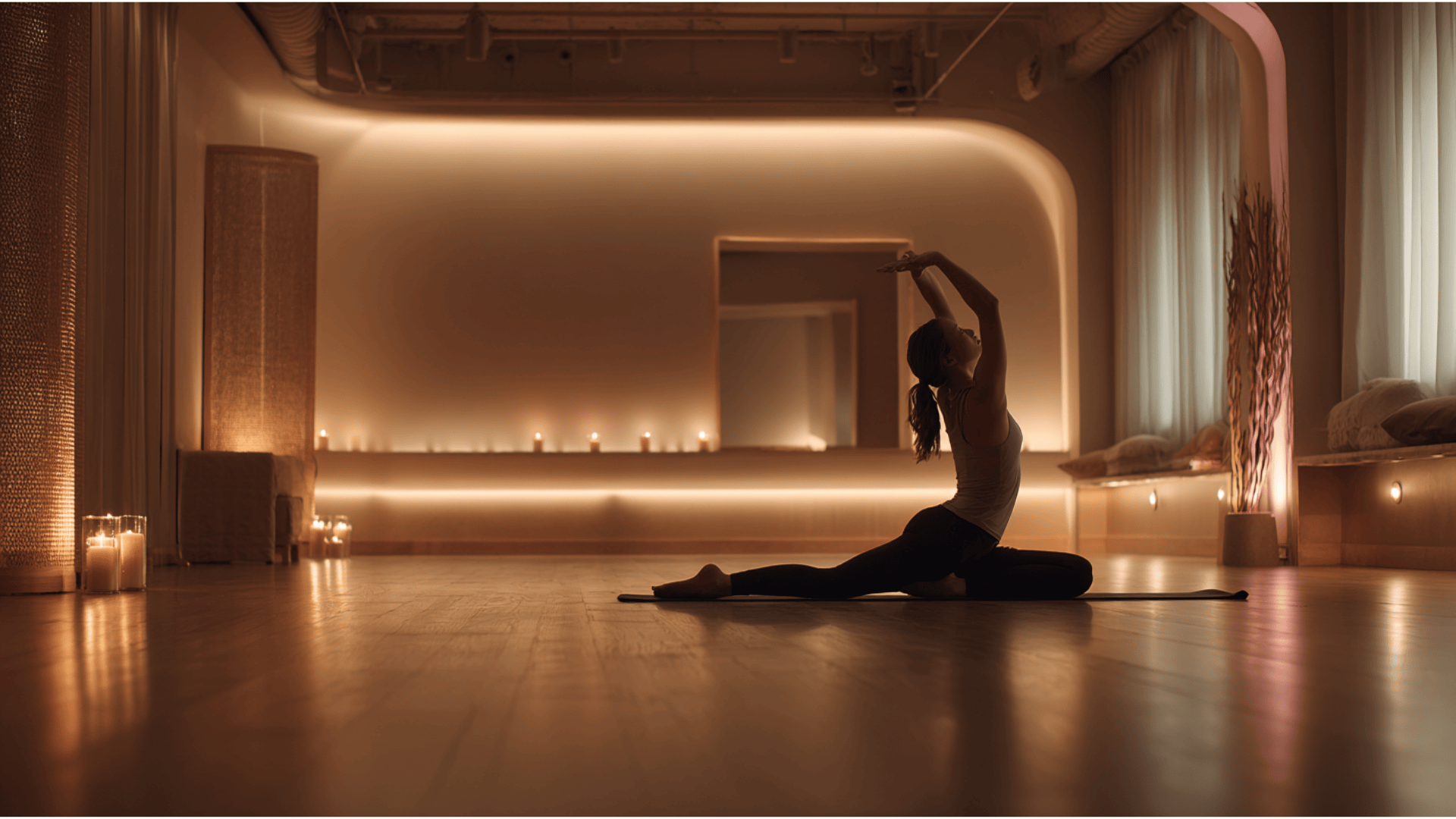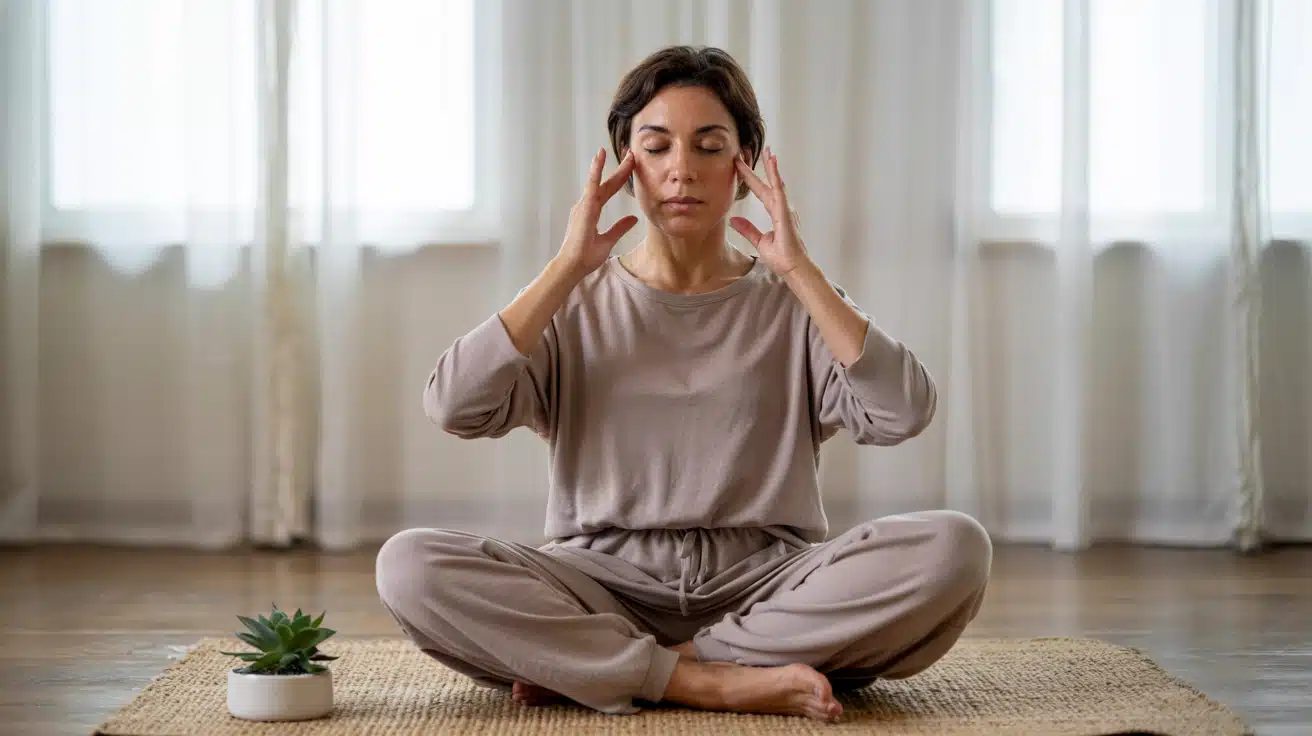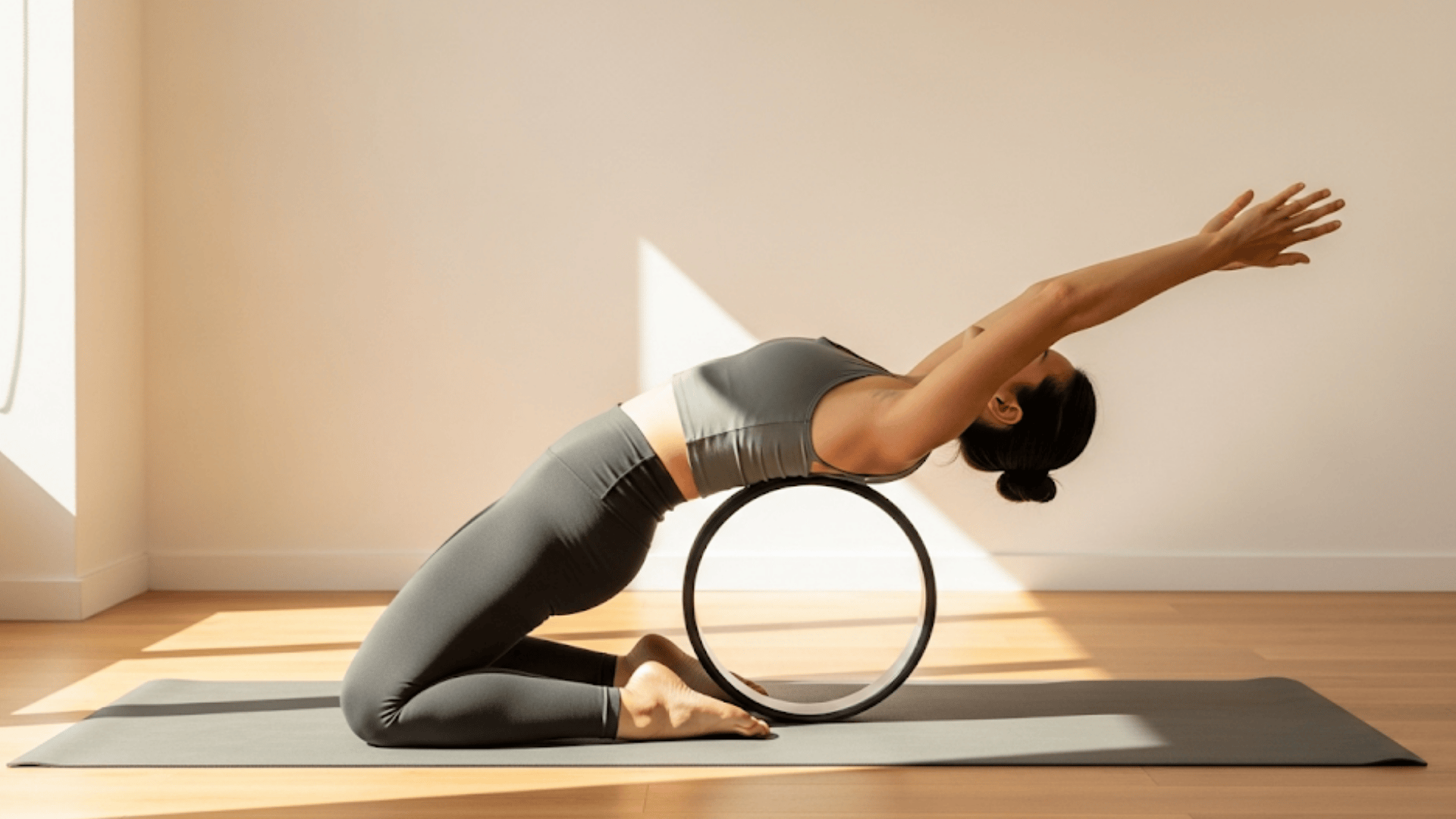Imagine walking into a steamy room, unrolling your mat, and letting the heat melt away your worries.
That’s hot yoga for you. It’s yoga practiced in a hot, humid environment, typically maintained at a temperature of 80 to 105 degrees Fahrenheit.
Think styles like Bikram or hot Vinyasa.
The heat cranks up the intensity, making you sweat more and stretch deeper.
In this blog, we’ll explore the real benefits for your body and mind, all backed by solid scientific research.
No fluff, just facts from studies. Hot yoga isn’t a miracle cure, but it can make a big difference in how you feel every day.
What is Hot Yoga?
Hot yoga gained popularity in the 1970s, thanks to Bikram Choudhury, who developed a specific 26-pose sequence.
But it’s not just Bikram; many studios offer heated versions of Vinyasa or other flows.
The room’s warmth helps your muscles loosen up fast. You sweat buckets, which some say helps flush out toxins, although science is mixed on that.
It’s tougher than regular yoga because your heart works harder in the heat. If you’re new, start slow. Hydrate like crazy. If you have health issues, consult your doctor first.
Physical Benefits of Hot Yoga
Your body undergoes a significant transformation with hot yoga. It’s not just about feeling bendy; science shows real changes in strength, heart health, and more. Let’s break it down.
1. Enhanced Flexibility and Range of Motion
The heat makes your muscles more pliable right away. You can hold poses more deeply without straining.
A study on Bikram yoga showed that participants improved their flexibility in the lower back, shoulders, and hamstrings after just eight weeks. It’s great for stiff joints.
But watch out, don’t push too far, or you might pull something. Over time, this can help with everyday moves, like bending to tie your shoes.
2. Calorie Burn and Weight Management
Hot yoga ramps up your heart rate, transforming a chill session into a calorie-burning experience.
Research from Colorado State University found that men burn approximately 460 calories and women around 330 in a 90-minute class, similar to a brisk walk.
It might boost your metabolism by 10-30% compared to non-heated yoga, helping with fat burn even after class.
Pair it with good eating habits for real weight loss results. It’s not magic, but it adds up.
3. Improved Cardiovascular Health
Sweating in the heat challenges your heart in a good way.
Studies suggest it can lower blood pressure and improve blood flow. One review found hot yoga promotes heart adaptations, like better tolerance to stress. It’s like mild cardio.
Your resting heart rate might drop with regular practice. Not as intense as running, but it builds endurance. Great for folks looking to ease into fitness.
4. Boosted Bone Density and Strength
- Weight-bearing poses in hot yoga help fight bone loss, especially as you age.
- A five-year study on women practicing Bikram yoga showed increased bone density in hips, neck, and lower back.
- It also builds muscle strength, improves balance, and reduces the risk of falls.
- Research links it to countering osteoporosis in women.
- The heat might enhance these effects, but more studies are needed.
5. Blood Sugar Regulation and Immune Support
Hot yoga can steady your blood sugar levels. An eight-week study saw better glucose tolerance in older adults with obesity. That’s helpful for managing diabetes.
The practice enhances insulin sensitivity through specific poses and breathing techniques. On the immune side, increased blood flow might strengthen your defenses. Some say the sweat detoxes, but the evidence is slim. Still, it supports overall health.
Mental Health Benefits of Hot Yoga
Hot yoga isn’t just a body workout; it’s a mind reset, too. The combo of heat, movement, and focus calms the chaos upstairs. Science backs this up big time.
1. Stress and Anxiety Reduction
- Breathing deep in the heat flips on your chill mode, lowering stress hormones.
- A six-week study found hot yoga boosted mindfulness and peace of mind.
- It helps manage anxiety by teaching you to stay present.
- Regular sessions can make daily worries feel smaller.
2. Depression Relief and Mood Improvement
The endorphins from hot yoga lift your spirits. One study showed it cut depressive symptoms by at least 50% in participants after eight weeks.
Heat might play a role, like a natural antidepressant. It’s not a replacement for therapy, but a solid add-on. Many feel happier and more positive right after class.
3. Overall Well-Being and Mindfulness
- Hot yoga builds emotional resilience.
- Studies link it to better life satisfaction and reduced negative thoughts.
- The meditative side sharpens focus.
- Over time, you might handle life’s curveballs better.
Scientific Evidence and Studies on Hot Yoga Benefits
Research on hot yoga is growing, but it’s not perfect. Most studies focus on Bikram style, with small groups.
Here’s a quick table summing up key findings:
| Benefit | Key Study/Source | Main Findings | Limitations |
|---|---|---|---|
| Flexibility | 2013 Bikram Study | Improved lower back and hamstring flexibility after 8 weeks. | Small sample; risk of over-stretching. |
| Calorie Burn | Colorado State Research | 330-460 calories burned per session. | Varies by person; not always superior to regular yoga. |
| Heart Health | 2021 Adaptation Study | Better cardiovascular tolerance. | Benefits may not all come from heat. |
| Bone Density | 5-Year Bikram Study | Increased density in premenopausal women. | Long-term data limited. |
| Mental Health | Harvard Depression Study | Reduced symptoms; 44% remission rate. | Needs more large-scale trials. |
Overall, evidence points to real perks, but hot yoga isn’t for everyone. Dehydration or heart issues? Skip it. More research would help clarify.
Are There Risks to Hot Yoga?
Research reveals several key issues that arise when you crank up the heat. It’s not just feeling woozy; some can be serious.
- Dehydration and Electrolyte Imbalance: You lose tons of fluid through sweat—up to 1.5 liters per session. This disrupts your body’s balance of salts and minerals, leading to cramps or more severe issues. A Mayo Clinic report notes higher chances if you’re not pre-hydrated.
- Heat Exhaustion or Stroke: Core temps can hit 104°F, risking organ shutdown. Rare, but real—one study found temperatures over 103°F in some individuals. Symptoms? Rapid pulse, headache, weakness.
- Overstretching Injuries: Heat loosens muscles fast, tempting you to push too far. This can tear tissues or inflame joints, leading to long-term problems such as arthritis.
- Heart Strain: Your ticker works overtime in the heat, causing your heart rate to spike. Folks with heart conditions face arrhythmias or worse. One review links it to cardiac risks if you’re vulnerable.
- Breathing Issues: Steam can exacerbate asthma or make it difficult to take deep breaths. Not fun if you’re already wheezy.
Studies also debunk some hype; the heat doesn’t always add unique perks and might not “detox” like claimed. Germs thrive in humid environments, increasing the odds of infection.
Who Should Skip or Be Extra Careful?
Not everyone’s built for the sauna vibe. If you fit these, think twice or chat with a doc.
Pregnant folks? Big no; overheating risks birth defects.
Got high blood pressure, diabetes, or past heart issues? The extra strain could backfire.
Older adults or meds that mess with sweating (like antidepressants) face higher odds of trouble.
Beginners, ease in slowly, don’t jump straight to the inferno.
Conclusion
Hot yoga offers real benefits for your body and mind. The research shows improved flexibility, better heart health, and mood boosts. You’ll burn calories, strengthen bones, and feel less stressed.
So what’s next? Start with one class per week if you’re new. Listen to your body and stay hydrated. Not everyone should try hot yoga, especially if you have heart problems or get dizzy easily.
The heat isn’t magic, but it can make a difference in how you feel. Regular practice builds both physical strength and mental calm. Your local studio probably offers beginner classes.










